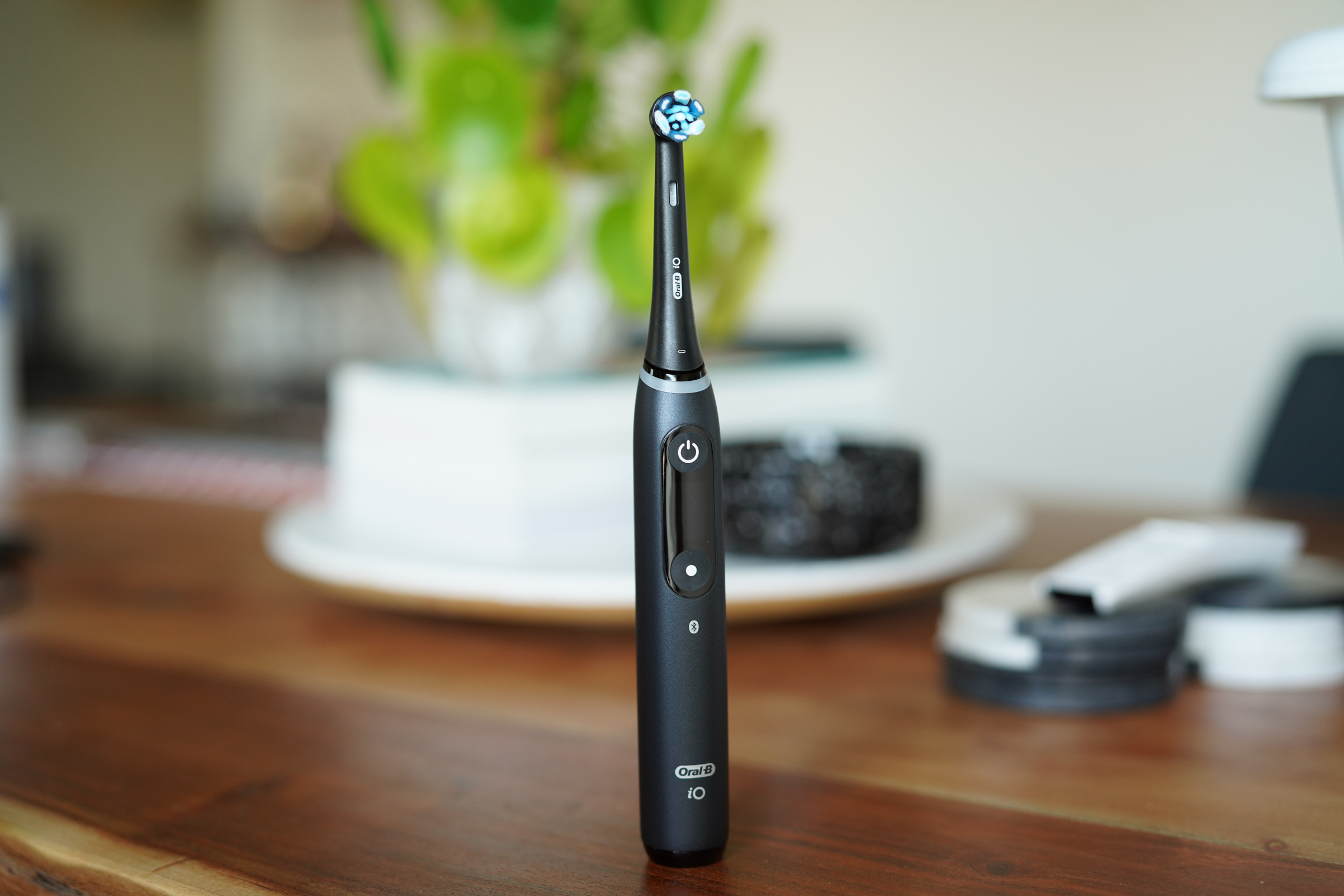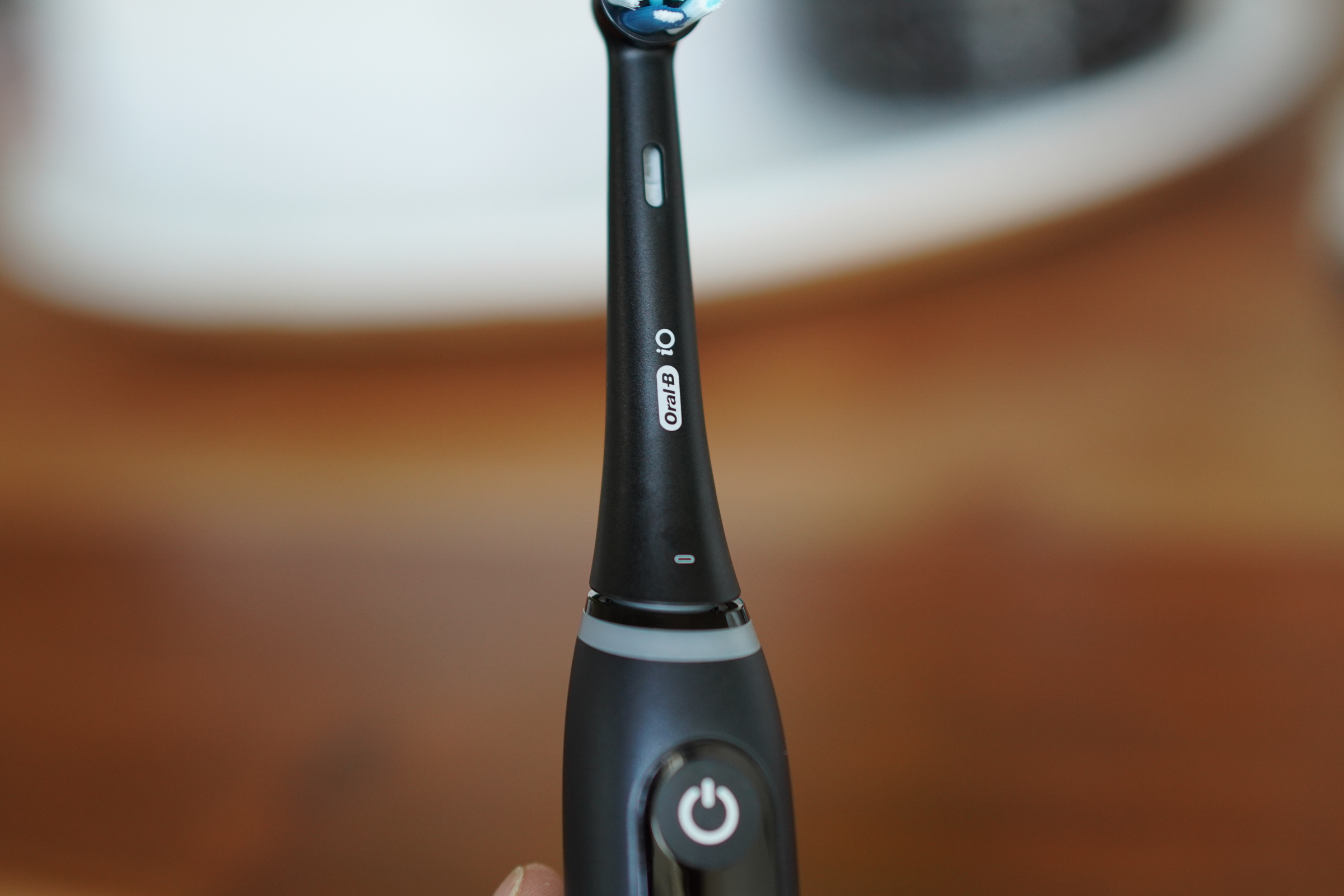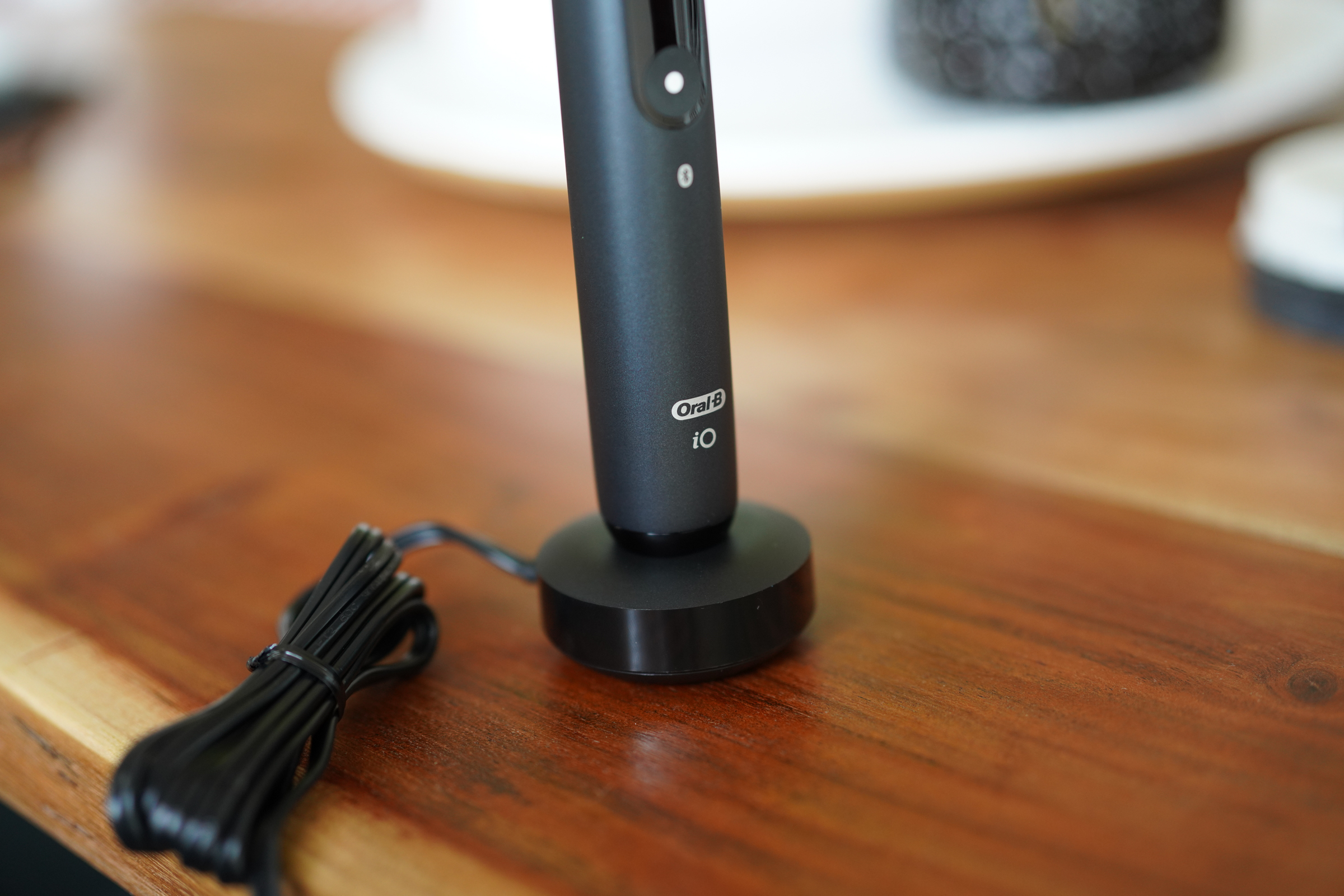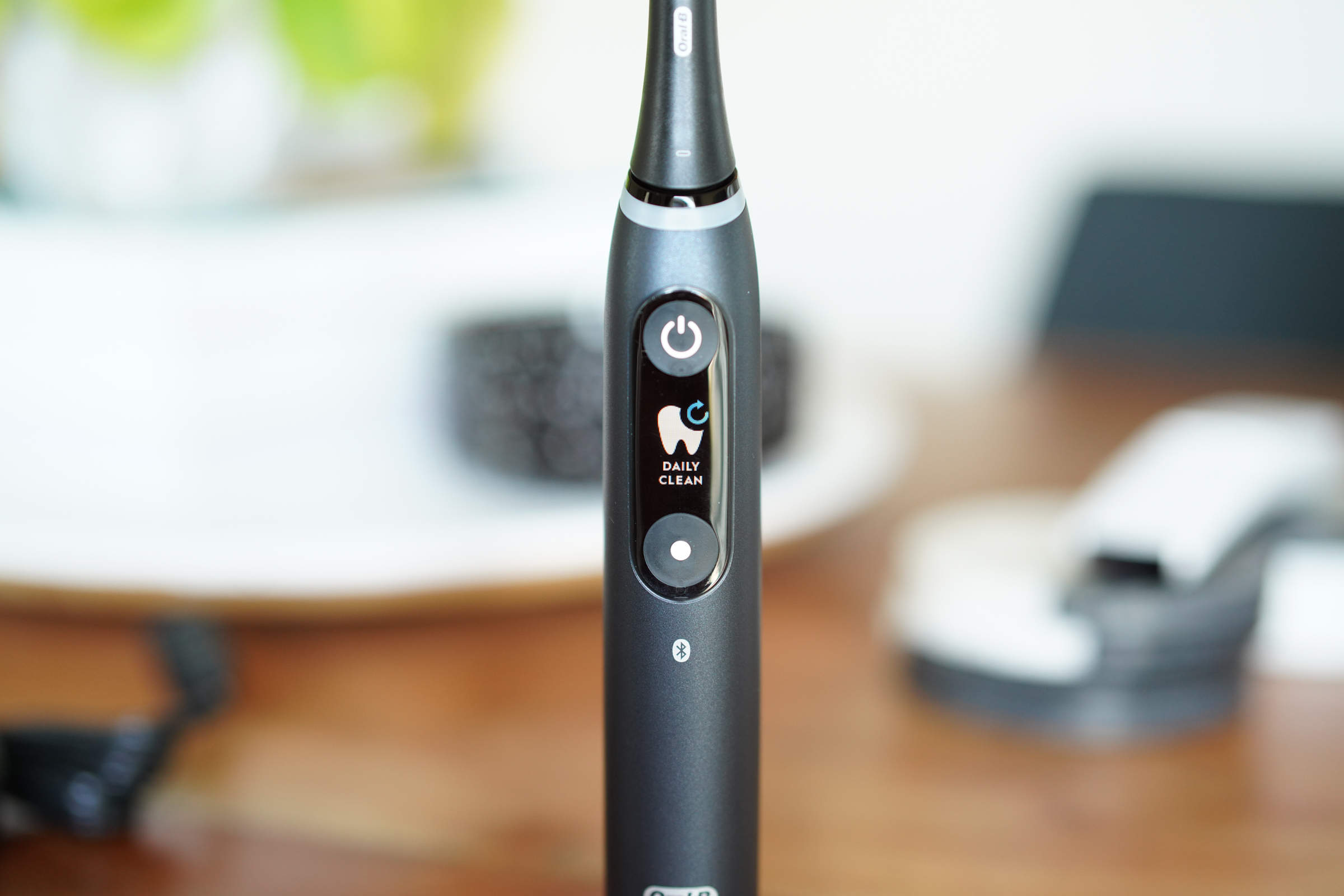It can be easy to mock the very concept of a ‘smart toothbrush’ – what other device in our lives do we use daily that seems least in need of a connected upgrade? But Oral-B has been upgrading its powered toothbrush lineup with Bluetooth and app-based intelligence for quite a while now, and its latest new smart brush, the iO Series, is actually a very clever and capable update that should help you keep your teeth better-brushed and in healthier shape.
The basics
Oral-B’s iO is a fundamental rethinking of its powered toothbrush lineup in a way that none of its prior new models has been; the design, feature set, application and more are all brand new. The new look, designed in partnership with Braun, is a vast improvement (more about that below), and there’s a color display that provides more info and visual feedback than on any previous Oral-B smart brush. The induction charger is also new, with magnetic support to keep it in place, and there’s a new companion app that provides a lot more in the way of guidance, with improvements that accrue over time as the software gets to know you.
 The iO Series includes different accessories and equipment depending on which version you get – Oral-B provided the Series 8, which includes the toothbrush, a charger, two replacement heads and a carrying case. The different Series’ also include different features – the Series 7 is the most affordable, but lacks the Sensitive+ brushing mode on the Series 8, while the top-end Series 9 is the only one that includes a dedicated tongue brushing mode.
The iO Series includes different accessories and equipment depending on which version you get – Oral-B provided the Series 8, which includes the toothbrush, a charger, two replacement heads and a carrying case. The different Series’ also include different features – the Series 7 is the most affordable, but lacks the Sensitive+ brushing mode on the Series 8, while the top-end Series 9 is the only one that includes a dedicated tongue brushing mode.
Using the toothbrush is easy. You can use one of two buttons on the brush itself to cycle through its various modes, and then press the other to turn it on and off. An integrated LED ring provides visual feedback about when you’re applying the right amount of pressure, and when you use too much, and vibration feedback indicates when you hit 30-second marks, and when you’ve completed the full dentist-recommended two minutes of brushing.
With the iOS or Android app, you can connect your iO via Bluetooth for more advanced feedback and control, including a guided brushing mode that shows you where you’ve cleaned, and for how long, with a simple graphic representation of your teeth.

Image Credits: Darrell Etherington
Design and features
The new industrial design of the iO is a vast improvement over the previous Oral-B smart toothbrushes in every way. They’re sleeker, with redesigned interchangeable brush heads that not only have a better mechanical connection to the base, but that also flow into the body with a smooth swooping connection point. The black version I reviewed has a matte, slightly textured finish that feels and grips great, and the built-in display is bright and full-color for an easy understanding of which mode you’re in, as well as the status of your battery charge and a quick report card of sorts about the quality of your last brush via smiley face feedback.
Visual and force feedback both work great on this model, with an easily visible LED ring showing green when you’re using just the right amount of pressure, and turning quickly to red when you press too hard. As a serial excess pressure brusher, this worked very well in modulating my bad habit, and I was very quickly able to get into a rhythm of correctly-applied pressure instead.
The new charger design lacks the peg that was present on Oral-B’s previous rechargeable toothbrushes, and instead relies on a magnetic connection akin to the one Apple uses on its Apple Watch charger. This tends to make it a bit more likely to get knocked off the charger by wayward reaches, I’ve found, but it also makes both the brush and charger easier to keep clean, and the charger takes up less counter space. The LCD screen will show you charge level when placed on the charger while it’s plugged in.

Image Credits: Darrell Etherington
As mentioned, you can use the Oral-B iO completely without the companion app, and it works very well. But the app is a great way to help upgrade your daily care routine, thanks to its guided brushing modes and accumulated brushing activity tracking. The guided mode shows you which region you’re currently brushing, breaking your mouth up into six separate zones (three up top, and three on the bottom). In my testing, this tracking was a bit hit or miss when it comes to accuracy, often getting wrong which area I was actively brushing. It was accurate enough to provide a general sense of where I needed to be doing a better job than I had been, however.
Over time, the app will use the info gathered from your guided sessions to provide you with specific tips on how to improve. It also allows you to self-report flossing, rinsing and any gum-bleeding for more detailed trend tracking over time.
Bottom line

Image Credits: Darrell Etherington
The Oral-B iO series sits at the very top of the company’s electric toothbrush lineup, at $249.99 for the Series 8 as reviewed, or $299.99 for the Series 9. The kit you get does include two replacement heads in addition to the one that comes on the brush for a total of 3, along with the travel carrying case and charger (you get 4 total heads on the Series 9, as well as a charging travel case on top of the additional mode an sensing capabilities of the brush itself). You can get a basic electric toothbrush for $50 or less, by comparison.
That said, the iO does offer excellent build and brushing quality, which will definitely leave your mouth feeling cleaner than with budget options. And it’s intelligent features are great if you want to be more mindful about your daily dental hygiene routine, too. That, combined with its attractive, ergonomic design, mean that this is a great option so long as you’re willing to spend a little bit more on a premium device.


 The iO Series includes different accessories and equipment depending on which version you get – Oral-B provided the Series 8, which includes the toothbrush, a charger, two replacement heads and a carrying case. The different Series’ also include different features – the Series 7 is the most affordable, but lacks the Sensitive+ brushing mode on the Series 8, while the top-end Series 9 is the only one that includes a dedicated tongue brushing mode.
The iO Series includes different accessories and equipment depending on which version you get – Oral-B provided the Series 8, which includes the toothbrush, a charger, two replacement heads and a carrying case. The different Series’ also include different features – the Series 7 is the most affordable, but lacks the Sensitive+ brushing mode on the Series 8, while the top-end Series 9 is the only one that includes a dedicated tongue brushing mode.




